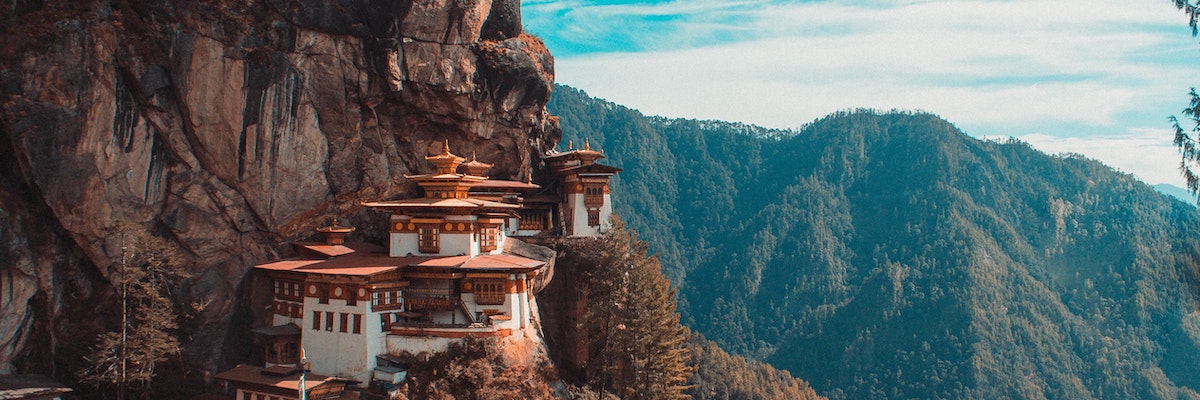The very first thing that comes to your mind when planning a trip to Asia is, imagining chaotic cities, luxury resorts, striking landscapes and street food.
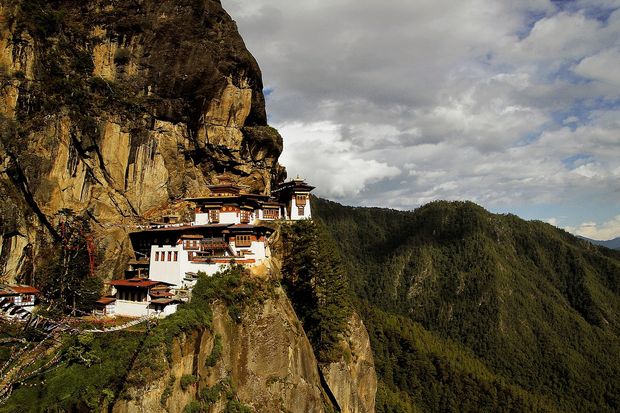
Although, this is true for many Asian countries like Thailand or Japan, what if told you that this is not the case for some other countries like Bhutan, which don’t even have internet (in many places), running hot water, televisions and other electric devices?
Bhutan is a small and isolated country located between the countries of China and India, right above the Himalayan Mountain range.
Bhutan is a distinctive country, which was isolated from tourism for centuries until not that many decades ago. In fact, not until the 1970s that Bhutan had seen its first tourists allowed in the country.
Given its geographical location on top of the Himalayas, Bhutanese people and the country itself have very strong ties with Tibet, hence, most of the population of Bhutan practises Tibetan Bhudaism.
Bhutan is worldwide known for being home to the “Happiest People on Earth”, as the main focus of their rich history and culture, revolves around being content, and embracing positivity towards life.
Not only, famous for its breathtaking landscapes and Bhutanese formidable culture, but also, Bhutan is famous for its rich nature, both in its flora and fauna, a hallmark of the beauty of the country.
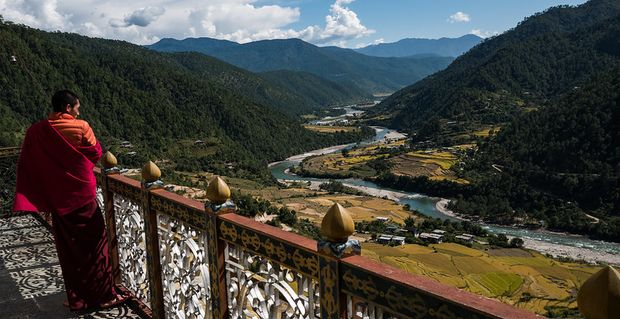
This is because Bhutan is home to the highest concentration of plants, birds, mammals, and even reptiles, in the world per unit area! Outstanding for those nature lovers!
The scenery of Bhutan consists of three different zones, the Alpine Zone is found above 4000m altitude. There is barely any forest canopy; the Temperate Zone, between 2000m to 4000m, is full of broadleaf forests; and the Subtropical Zone, ranging from 150m to 2000m with Tropical or Subtropical forest coverage.
Due to this well-differentiated topography, the flora and fauna of the country are so diverse. The thick forests of the country, are a shelter to at least, 300 species of medicinal plants, 20,000 species of bees, more than 90 species of mammals, 770 species of birds and other endangered species.
Bhutan is an astonishing place with an exquisite culture and traditional traits, that cannot be found anywhere else in the world. Its people's traditional clothing is distinctive and original, a wonderful fusion of Indian and Tibetan styles, representing Bhutan's strong attachment to Tibet.
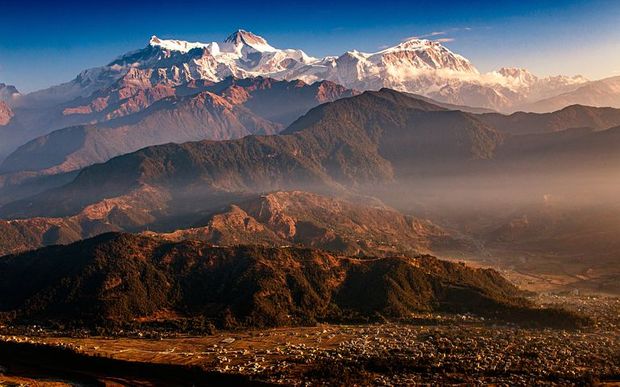
Due to this uniqueness and singularity, still, many people haven’t heard of Bhutan until recent years or not at all, remaining one of the most untouched places on the planet.
With all these trademarks, one could be exploring Bhutan for months and still not be done with all the prominent things to see in this magical place.
How many days should you spend in Bhutan to make the most of your trip?
Stating a definitive answer is complicated, as the chosen amount of days can vary depending on the visitor's aims for the trip. It will depend on your interests and the time available. Having said that, most travellers stay for 5 to 7 days. 5 days, is the optimal and a good amount of time to learn the Bhutanese and explore the main attractions, such as the capital city of Thimphu, the Tiger’s Nest Monastery, and the fortresses of Trongsa and Punakha, among others.
We can confidently state, that, there is no scarcity of attractions and activities in Bhutan, ranging from, hiking in the Himalayas, taking a scenic mountain walk, visiting a traditional village, exploring the cuisine of the country and many other things. Bhutan is the right choice for everyone from adventurers and spiritualists to luxury and glamper tourists.
As personal advice from us, no matter what your plans are initially, try to be flexible on this trip as it truly is a unique atmosphere that you won’t find anywhere else.
As incredible and dreamy as all of this sounds, it is important to know a couple of things before you go to Bhutan. Sometimes, atypical means that it requires a bit more work to be understood, which is the case for Bhutan.
Essential travelling tips to Bhutan in 5 days.
- It is not as convenient to travel around Bhutan as in other countries, for which, having a general idea of what you want to see on your trip and planning around that is crucial.
- Be mindful of the immigration requirements to enter Bhutan. Except for citizens of India, Bangladesh and Maldives, the rest of the world's citizens need a valid visa and active passport to cross the country. The cost of this visa is 40 USD and you need to get it ahead of time before your flight to Bhutan.
- Bear in mind that, there is also a daily “Sustainable Development Fee” of $200 per person that must be paid at the start of the trip to Bhutan, which is aimed to help conserve the country while still being explored by travellers. Unfortunately, this increases the budget for this trip.
- When purchasing goods or activities in Bhutan, it is preferred to pay with USD, although, you can pay with the local currency Nu and you will Indian Rupee in return.
- There are not many ATMs around the country, except for the capital and other bigger cities. We would advise withdrawing as much as you think you will need at the airport.
- Dressing appropriately according to Bhutan standards is very important. When visiting monasteries and Dzongs is essential to dress conservatively, otherwise, permission to go in can be denied. Dzongs are incredible buildings in Bhutan and it is really interesting to visit them all. As in Bhutan, there is no real separation of religion and state, most of these traditional buildings do contain both, a temple and an administrative office.
- Appropriate clothing includes, long sleeves on both legs and arms, as well as, zipped jackets or hoodies, not around the waist. Also, closed shoes and no hats or caps are allowed.
- Visiting Bhutan when the season is right is crucial, otherwise, you will experience a very wet and cold trip. This is true for the months of January and February. From April onwards, until October, the climate remains dry and pleasant with all the flowers and plants in full bloom. October to December is also good but a bit fresher and sunny skies. That being said, Bhutan’s mountains landscape is unpredictable and it can get cold, even, in the warmer months. Bring warm clothes and an umbrella.
- The most popular way to get around Bhutan is by bus. We recommend private bus companies which operate very efficiently and they take you from the major cities to wherever you want to go. You can even take a bus from India or Nepal to Bhutan! If you are to be a bit more adventurous and want to get to more remote areas, then we would recommend hiring a private car.
- Getting to Bhutan is done by plane. Drukair is the only airline operating to get in and out of Bhutan. They have flights from Bangkok, Delhi, Kolkata, and Kathmandu.
- Most of the Bhutanese meals are vegetarian, as most of the population is Buddhist. They have very nutritious traditional dishes like Momos, Butter Tea, Thupka and many other ones based on rice, lentils and spices.
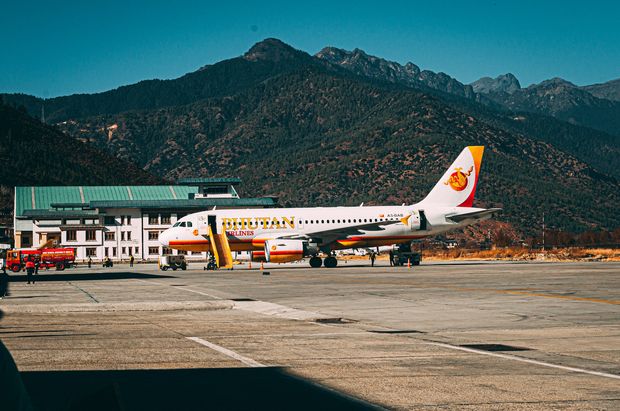
Reasons why 5 days is the perfect amount of days to visit Bhutan.
Most South Asian countries are quite big in land area but Bhutan is, fairly small, with only 38,394 square kilometres of total land area. The roads are well developed and clear of obstacles for which traffic jams or delays in bus routes are rare. This is particularly important when travelling, as oftentimes, visitors do spend a fair bit of their holiday time in between trips and dealing with delays and other issues.
Of course, having a month to explore every hidden corner of Bhutan would be a dream, but due to its small area, the country gathers all the iconic attractions and emblematic places in pretty much only a few cities.
It is amazing how you can cover visiting the most important attractions in 5 days if you choose a good travel itinerary. For example, our 5 days perfect itinerary covers all the great highlights of Bhutan from sites to explore in Thimpu, the city capital of Bhutan and the adjacent valleys, to Punakha Valley and the emblematic Tiger's Nest Monastery, which is built on the side of a mountain.
Please note that in Bhutan most organised activities you would finish by 5 pm and most restaurants and markets shut down by 6 pm for most of the exploring and tourism would be done by that time. This means you need to pack more things to do in that time frame than in other places.
Considering that Bhutan is quite an expensive country to visit, taking around 250$ per person per day on top of the rest of the travel costs, most travellers won’t stay longer than 5 days.
The Perfect 5-Day Bhutan Itinerary.
Day 1
You will fly into Paro International Airport in the morning, from wherever the city is convenient given your location. We flew from Bangkok, Thailand, as we were travelling Southeast Asia at the time.
We recommend relaxing a bit on this first day, as your body will need some time to adjust to the altitude that the country sits at. Get driven to Thimphu, the capital where you can get an idea of what the Bhutanese culture and cuisine are all about.
After a repairing snack break and environmental adjustment, you can visit The Thimphu Dzong, which is, actually, the biggest Dzong in Bhutan, and the seat of the King of Bhutan. Visiting the National Memorial Chorten is also a great experience in Thimphu.
Drive up next, to Kuenselphodrang Nature Park where you will be amazed to see the largest bronze statue of Buddha in the world, Buddha Dordenma. Alternatively, if it happens to be a Saturday or a Sunday, you can experience what the Weekend Centenary Farmers’ Market is all about in Bhutan, where villagers go to sell their agricultural produce. They are so friendly and lovely people, it is amazing to see.
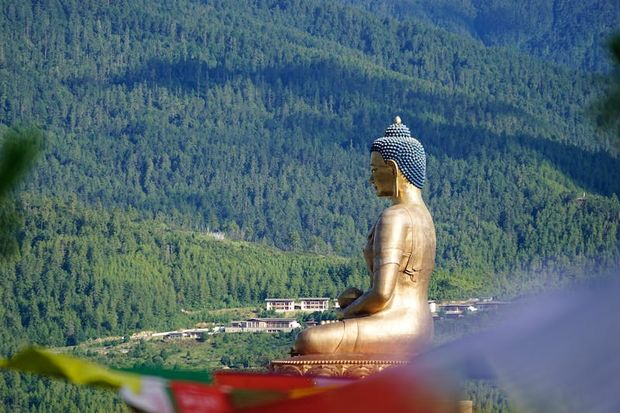
Finish off your first day with a great dinner meal in town to have a great taste of the local food. Bear in mind, though, that most restaurants will shut down by 6-7 pm. Take a night stroll around town before heading off to sleep!
Day 2
On your second day, get up early and embark on your next adventure by driving three hours to Punakha, Bhutan's old capital. This drive is fantastic as the further you get out of Thimphu the city landscape starts turning slowly into forests in bloom. As you keep driving up to the Dochu La pass through the Himalayas spectacular landscape.
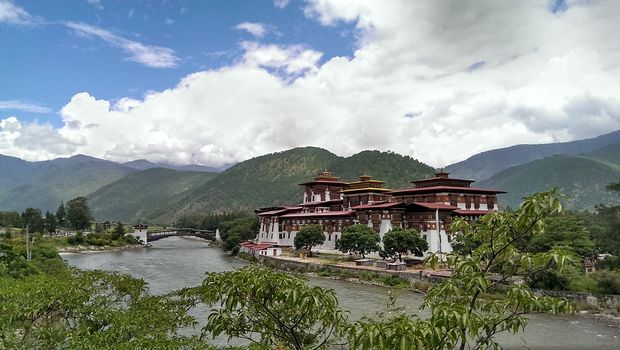
Right after arriving in Punakha, take a breath and after grabbing a local snack, start a short hike on your way to Chimi Lhakhang Temple, a beautiful temple devoted to Saint Drukpa Kuenley.
After having a beautiful lunch around the local places in this city, make your way to a mind-blowing walk to Chorten Nebu Goenba Monastery, which is situated up a gorgeous rice terrace and you will have a spectacular panoramic view of the Punakha River. This hike is not high-intensity but it does take around three hours. However this walk is an absolute must, it will be very pleasant and the fresh out breeze will help you out fulfilling this hike.

After this hike, go ahead and visit the Punakha Dzong, a masterpiece of a temple between two rivers. This Dzong used to be a fortress and the historic and cultural background around this monument is fabulous. After an exhausting day, go ahead and visit the Punakha Market to conclude your day to check out local gifts and items.
Day 3
On the third day of your trip, you will be on your way to Paro. The drive will be through the singular landscape of Dochu La Pass. In the middle of this drive, take a break to take a low-intensity stroll to the mountainside located temple of Lungchutse Lhakhang. If have ever dreamt of seeing the Tibetan Himalayas, the view from this temple will take your breath away.
We recommend using this trip, as an opportunity to connect with nature, learn how to meditate and take all the spiritual vibe that this trip has to offer. Take a moment to meditate as you walk around the temple
On your way down from this hike, stop by Trashigang Goenba monastery, which you will see about halfway. As you arrive back in Paro, have a nice dinner and if you have some time and energy left, then, explore the town and visit places, such as the Dzong vigilance tower, which is home to the National Museum. Rinphung Dzong fortress and the Dumtse Lhakhang temple, are also pretty awesome places to see.
Day 4
On this fourth day, you will be visiting one of the biggest highlights of your trip and one of the most important landmarks of the country. A hike to the outstanding Taktsang Goenba, aka, Tiger's Nest Monastery, is an absolute must on this trip. The first iconic picture that you can find everywhere when searching for Bhutan, is this stunning mountainside monastery.
It is a bit of a steep walk but possible for all fitness levels. If you feel keen, climb up a bit more and check out the Zangdopelri and Ugyen Tshemo monasteries.
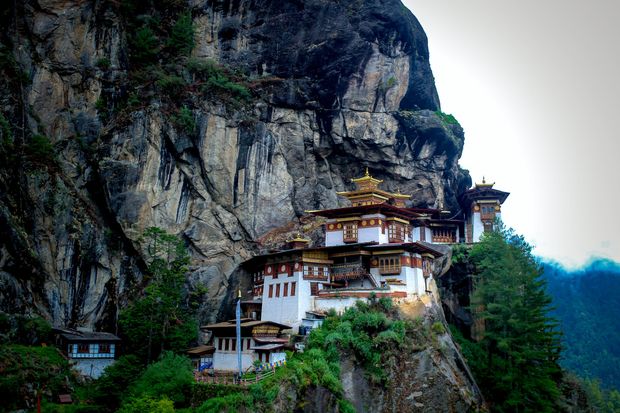
This will take up pretty much the entire day, as it is a bit of a hike and other bits to visit. To conclude on day 4, as you return to Paro, have an incredible dinner in Paro’s valleys’ awesome restaurants.
Day 5
Ideally, you get your flight out of Bhutan as late as possible so that at least you can enjoy the morning in Paro. Stop by the Khyichu Lhakhang temple, which is, perhaps, not as strikingly beautiful as the Tiger's Nest Monastery but very important for the Bhutanese people and their culture.
And that is it! depart from Paro, back to your hometown!
Where to stay in Bhutan
An important factor to consider when travelling to Bhutan is where to stay. Depending on the type of accommodation that you choose will have a very different vibe in terms of culture and food.
Bhutan is an awesome country in terms of varied accommodation choices, from camping sites, for those intending to go on a budget or simply, to be in contact with nature, and hostels, to luxury resorts for those who go on a glamorous retreat.

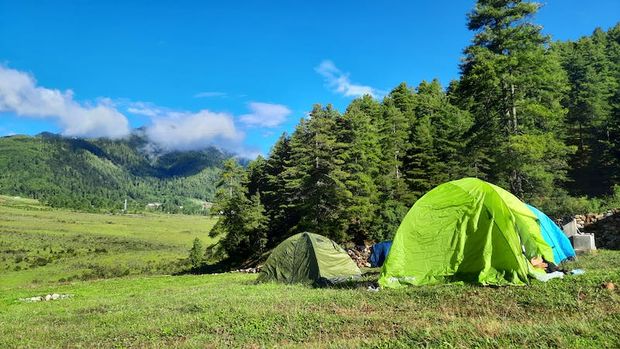
No matter what your budget is, there are accommodation options for every visitor, ranging from hotels, homestays, farm stays, hostels and luxury resorts.
There you go! Now you know the best tips to travel to Bhutan, the optimal number of days you should spend in Bhutan, when to travel to Bhutan, and how to plan those days accordingly.
Bhutan is a tiny, fascinating and unique country, hidden in between the Tibetan Himalayas, it is a very different country from the rest of the world. It is considered the place with the happiest people on earth whose culture swirls around the practice of Buddhism and profound meditation.
This region of the world is rich in impressive and stunning landscapes, which are full of forests, waterfalls, distinctive historical temples and monasteries and breathtaking views of the Himalayas mountain range.
These places (pretty much all the places in Bhutan) are UNESCO World Heritage Sites, making it one of the last untouched locations on the planet.
Lastly, there are a few places that are definite must-sees and cannot be missed. Make sure to visit the Tiger’s Nest Monastery. This is one of the most important landmarks in the country. Secondly, make sure to check out the Punakha Dzong, a beautiful fortress found between two rivers.
Thirdly and lastly, but not least is to visit Paro Taktsang, aka, the Tiger's Lair. This is another monastery sitting on a cliff with spectacular views.
Also, do not forget to eat loads of local Bhutanese food!
